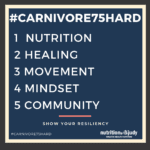

What’s In Your Sparkling Water?


We love our sparkling waters. There really isn’t anything like refreshing sparkling water on a hot summer’s day. The other day I saw caffeinated sparkling waters at the store. I’d recommend reading my caffeinated post before you pick up one of the caffeinated sparkling waters.
Takeaway 1: Opt for Unflavored Sparkling Waters. We Don’t Know What All Is Included in “Natural Flavors.”
Do you drink Topo Chico-like unflavored sparkling waters? Or the flavored ones?
My favorites have always been the watermelon or berry flavors but learning recently about natural flavors. I’ve been trying to drink the plain or unflavored versions.
Here’s why:
Most processed foods include natural flavors as an ingredient. Natural flavors are good, right? After all, they’re natural.
In order for foods to be convenient, processed foods need to have a long shelf life. The preservation methods tend to reduce flavor and food companies turn to natural and artificial flavors to enhance flavors after being processed. It’s similar to how milk and foods are fortified with vitamins after the vitamins are stripped during food processing. I talk about this in more detail here but basically, the vitamin D and calcium from your milk are not nature’s vitamins—they’re man-made synthetic vitamins added back to your milk.
According to the United States Food and Drug Administration:
“The term natural flavor or natural flavoring means the essential oil, oleoresin, essence or extractive, protein hydrolysate, distillate, or any product of roasting, heating or enzymolysis, which contains the flavoring constituents derived from a spice, fruit or fruit juice, vegetable or vegetable juice, edible yeast, herb, bark, bud, root, leaf or similar plant material, meat, seafood, poultry, eggs, dairy products, or fermentation products thereof, whose significant function in food is flavoring rather than nutritional.”
Got that?
I didn’t.
But what it does tell me is that the ingredient, “natural flavor,” doesn’t tell me much about what is really added. The guiding principle from the FDA is cryptic and I can assume that almost anything can fall under the category of “natural flavoring.” It’s similar to how if you manipulate numbers long enough, they can tell any story you want.
I know it’s nearly impossible to find processed foods without natural flavoring. Just try to do your best. For every flavored sparkling water I buy, I try to now buy one plain sparkling water.
Topo Chico has become a favorite. (Although it’s been acquired by Coco Cola).
Takeaway 2: Drink Sparkling Water but Away from Foods in order to Optimize Digestion.
I’ve never really discussed digestive health on my blog but it is very important to have the right pH levels when digesting foods. One way we can do that is by making sure our stomach acidity is at the correct pH of 1.5-3. We can maintain our stomach’s pH by minimizing the amount of liquid we drink during our meals. (This excludes soups as it is a pureed/liquid-form of nutrition).
There are some nutritionists and dietitians that may recommend drinking a large glass of water before eating to minimize food intake. It’s not the best advice as it will negatively impact proper food digestion. We need to properly break down our foods and absorb the nutrients during the digestive process. One way we can do that is by having the proper pH levels in our stomach acid. Drinking too much water will dilute our stomach acid.
I recommend only sipping on bone broth or water with a touch of mineral salt during our meals for optimal digestion. Drinking coffee, juices, soda, milk and other diuretics will also change the pH of our stomach acid. It is ideal to drink these beverages away from foods. Or even better yet, swap them for water. (Raw milk is ideal for children, you can read about why here.)
Remember, the ideal hydration is about half your weight in ounces. I always say to trust your body with this one. If you feel thirsty, you may already be dehydrated. Make sure to hydrate throughout the day and not gulp down 32oz in one fell swoop. Sip. Sip. Sip. Adding a touch of mineral salt will also help with absorption.
Additionally, for every diuretic ounce you drink, you need to add 1.5-2oz additional of water. This is a rule of thumb but do what feels best for your body. Hydration is critical and many Americans are chronically dehydrated.
Always find what works for you but high quality water should always take priority.




Bionaze
June 25, 2020 at 3:31 amBefore reading this, I always thought it’s just fine to drink sparkling water together with food while eating meals. I never thought I could still learn more about sparkling water from this. I thought that as easy as it can be accessed in stores, it is already safe.
Nutrition with Judy
September 4, 2020 at 1:27 amYes digestion is so complex and so important to learn!
Gretchen
February 12, 2021 at 4:24 pmI found out the hard way that some sparkling water is not just a co2 blend to make the fizz, it’s a corn based product.
I definitely am sensitive to corn anything, especially after Keto, then carnivore.
Just a tid bit! Love your work!!💗